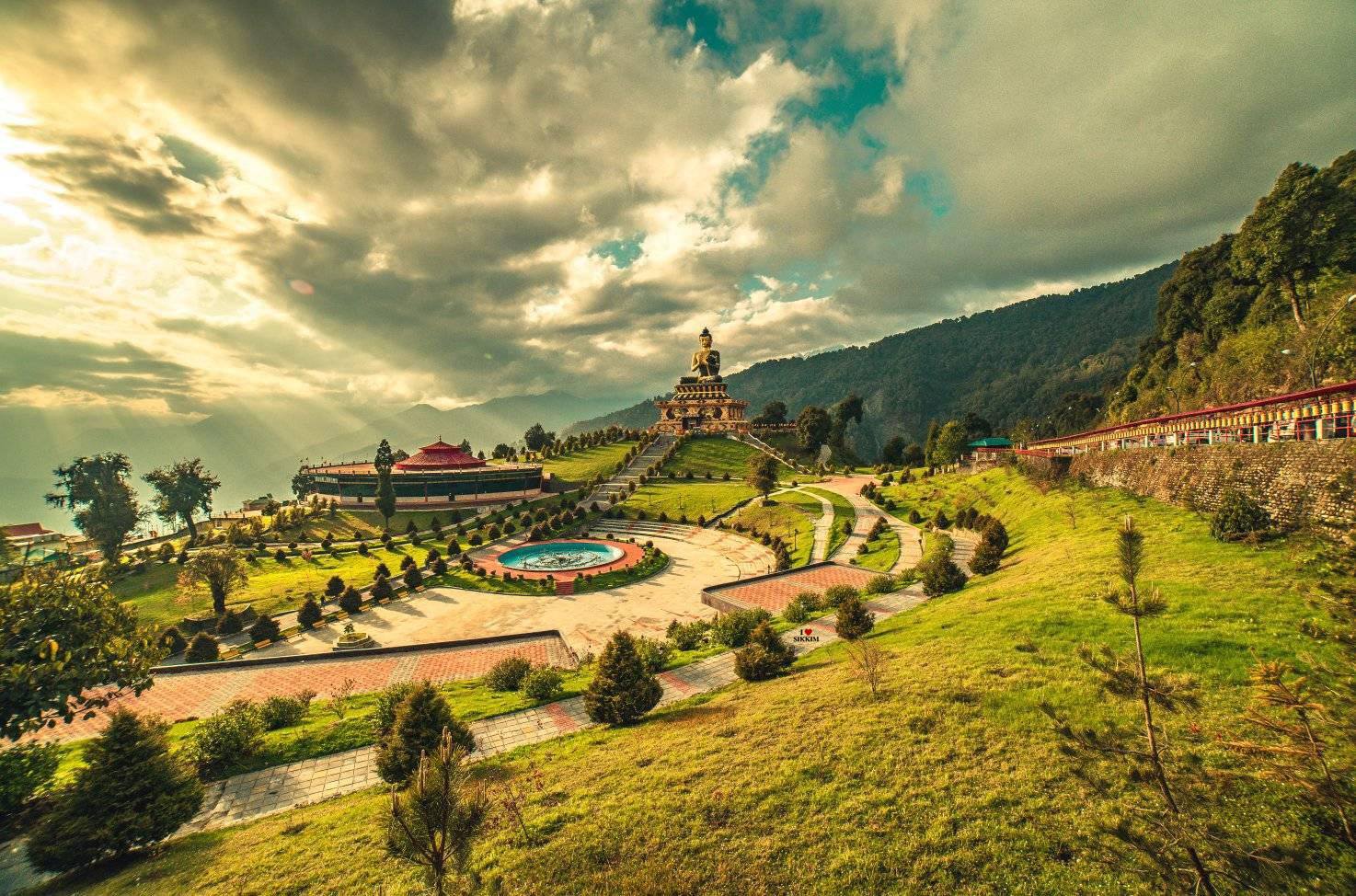My top Himalayan trek.
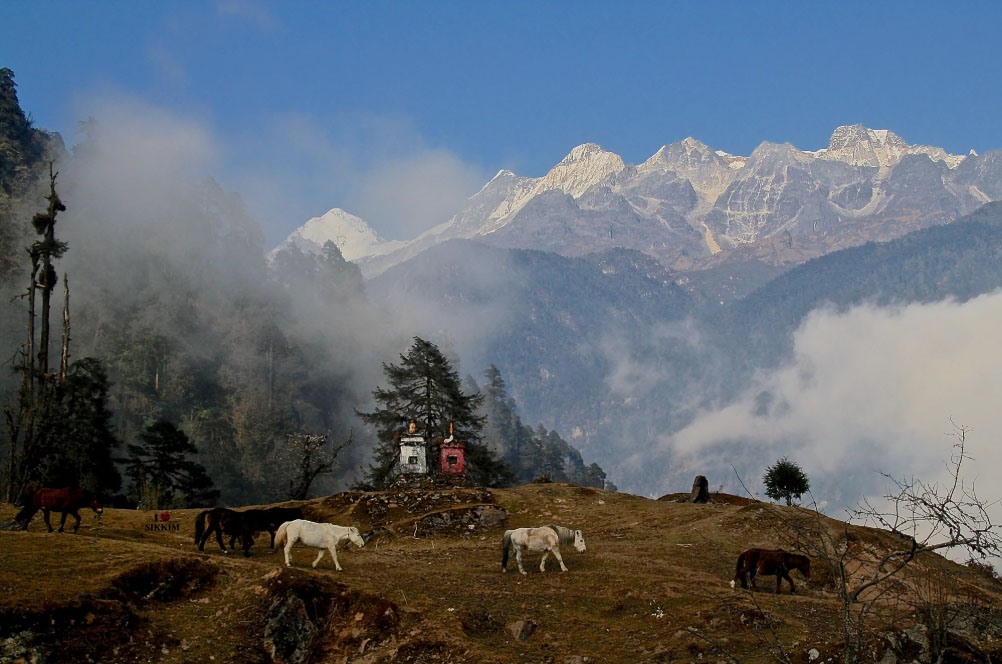
The majestic peaks of the Himalayas possess a magnetic allure, and none more so than Mt. Kanchenjunga, the world’s third-highest mountain. Despite its unparalleled beauty, it remains untouched by the commercial tourism bustling in other parts of the region. The lack of hotels serving beer and pizza along the trail preserves its uncommercialized nature, attracting primarily Indian domestic trekkers, often less experienced than their Western counterparts.
As a native of Sikkim, I’ve embarked on the trek to the Kanchenjunga base camp over 50 times. However, my preferred route diverges from the well-worn path that commences in Yuksom and completes a circular journey. While the festivities and celebrations post-return are enjoyable, my primary focus for clients is to showcase the breathtaking Himalayan vistas and the untouched natural surroundings.
Among the myriad routes leading to the world’s third-highest mountain, a lesser-known trail brimming with adventure and natural beauty starts from Uttarey village, just an hour’s drive from my birthplace. This ancient trail, once used by yak herders, caters to those seeking an authentic high-altitude Himalayan trek, rich in adventure and beauty.
The standout feature of this trek lies in the gradual unveiling of Kanchenjunga — starting as a distant silhouette and gradually looming closer. Goechala (4980 m) is the pinnacle of this journey, bringing trekkers face-to-face with the grandeur of Kanchenjunga. The views of Everest, Makalu, and Lhotse during the trek are equally enchanting, making this route my personal favorite.
Though I’ve trekked to Dzongri, Goechala, and the Kanchenjunga base camp from Yuksom, I must admit that Uttarey (2012 m) is my favored starting point. This route allows trekkers to acclimatize properly, minimizing concerns about high-altitude sickness.
Allow me to be your guide on this remarkable journey to Kanchenjunga…
Let me walk you through this awe-inspiring journey to Kanchenjunga:
Day 1: The trek commences with a gradual walk through a small settlement village, becoming steeper as we enter a dense forest adorned with rhododendron trees and alpine vegetation. April and May are ideal months for exploration. The leisurely 5-hour walk brings us to Chewabhanjyang Pass (3142 m), the border between Nepal and India. After crossing into Nepal for a cup of Nepali tea, we returned to our Indian camp for dinner, relishing the serenity of the evening.
Day 2: Proper acclimatization is crucial, so I suggest a rest day at Phokteydara. An acclimatization walk to the nearby hill called Phokteydara unveils a panoramic view of the Greater Himalayas, a sight encompassing four of the world’s five highest mountains. Clear weather transforms the day into a heavenly experience. Overnight stay in a tent.
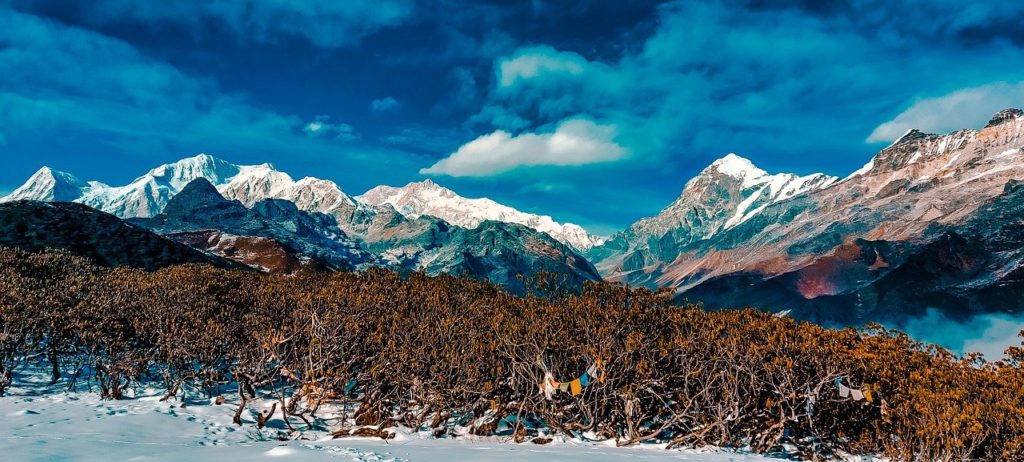
Day 3: The trek from Chewabhanjyang to Dhor (3749 m) is a beautiful walk. You’ll cross between Nepal and India multiple times along the zigzag path, making this one of the most stunning high Himalayan treks. You’ll encounter yak herder huts, the only evidence of human civilization in this remote region, as well as beautiful bird songs in the rhododendron forests. After the hike, you’ll arrive at your camp, where you can relax with a cup of tea and popcorn before indulging in a delicious dinner. Everything you need is provided. Overnight stay in a tent.
Lampokhri (4297 m), 6 hrs
Day 4: Today, we trek to Pharey Megu (3905 m), one of my favourite days on this journey. The walk is relatively flat, with no significant climbs. You’ll follow the ridge, enjoying magnificent views of the Greater Himalayan peaks. The sight of Kanchenjunga, Kabru, and Talung peaks dominating the landscape is awe-inspiring. If you’re lucky, you might spot rare Himalayan blue sheep during the trek. The day’s trek will take around 6 hours. After reaching Pharey Megu, you can relax and cherish the memories of the day with your fellow trekkers and crew.
Gomathang (3800) 6 hrs
Day 5: From Pharey Megu, the trail leads to Lampokhri (4297 m). Today’s trek will be slightly more challenging due to the higher altitude, and the walk will be slower, but the distance is manageable. The initial one-hour walk is relatively easy and provides uninterrupted mountain views. You’ll need to apply sunscreen and wear hats while ensuring you have enough water. After crossing challenging patches, you’ll reach a beautiful valley where you can see Himalayan peaks like Kabru and Pandim. The campsite at Lampokhri is only a 2-hour walk from this point. In the afternoon, seek your guide’s permission for a short walk and enjoy the sunset. Your nights are getting colder, and you’ll be at a higher altitude, but your trekking crew will ensure you stay warm and comfortable.
Day 6: Today, we’ll make our way to Gomathang (3800 m), offering an adventurous journey. You’ll cross two mountain passes—Danphey Bhir La (4530 m) and Kag Bhir La—where you can enjoy magnificent views of Kanchenjunga and surrounding peaks, and on clear days, even the mountains of Bhutan and Tibet. After descending from these passes, you’ll reach Gomathang, a campsite beside a glacier river, with views of the surrounding mountains. The gurgling sound of the river provides a soothing backdrop to your evening. Despite the adventurous day, you’ll sleep well with the fresh mountain air.
Dzongri (4170 m)
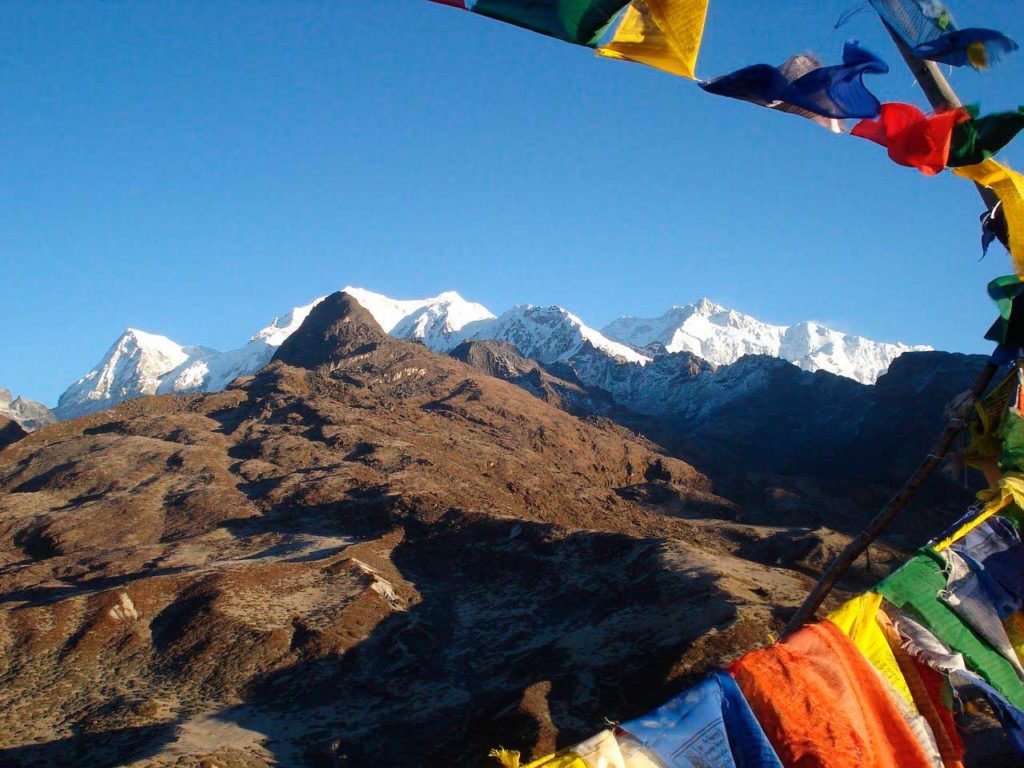
Day 7: Your trek from Gomathang to Pangding (4268 m) promises excitement and awe. While the altitude may present challenges, the manageable distance ensures an invigorating journey. Commencing with a meadow walk, you’ll soon find yourself traversing through a rhododendron and silver fir forest. The trek remains relatively easy until you reach Pangding camp, where spectacular views of the grand Himalayan mountains unfold.
Thangsing (3858 m), via Kokchurong.
Day 8: Continue your adventure from Pangding to Dzongri (4170 m), navigating through a combination of descent and climb. Crossing two rivers, Tikep Chhu and Rathong Chhu, adds an element of thrill to your trek towards Dzongri. This junction marks a convergence of various trekking trails, with some trekkers opting to conclude their journey at Dzongri, relishing the awe-inspiring views of Kanchenjunga. The Dzongri campsite buzzes with activity, offering multiple camping areas to choose from. In the afternoon, embark on an exploration of Dzongri Top for panoramic views or visit the nearby yak herders’ camp. Overnight stay in a tent.
Thangsing – Mt. Pandim Base Camp.
Today offers a leisurely pace, with a 2-hour trek to Lamuney, also known as Mt. Pandim Base Camp. Use this day to visit the glacier lake named Milky Lake (Dud Pokhari). Following a day hike to the lake, enjoy a flat walk to the Lamuney campsite. The enchanting views of Kanchenjunga, Pandim, and Tenzing Khang peaks accompany every step, creating a mesmerizing experience. Lamuney stands out as one of the most beautiful campsites, with a spectacular sunset view over the towering Pandim. Despite the colder night, your support team ensures warmth with hot water bottles.
Summit Day – 5000m
Prepare for an exhilarating summit day, reaching an impressive altitude of 5000 meters. As you ascend, the breathtaking vistas of the Himalayan peaks will accompany you on this remarkable journey. Embrace the challenge and the beauty that the summit day unfolds.
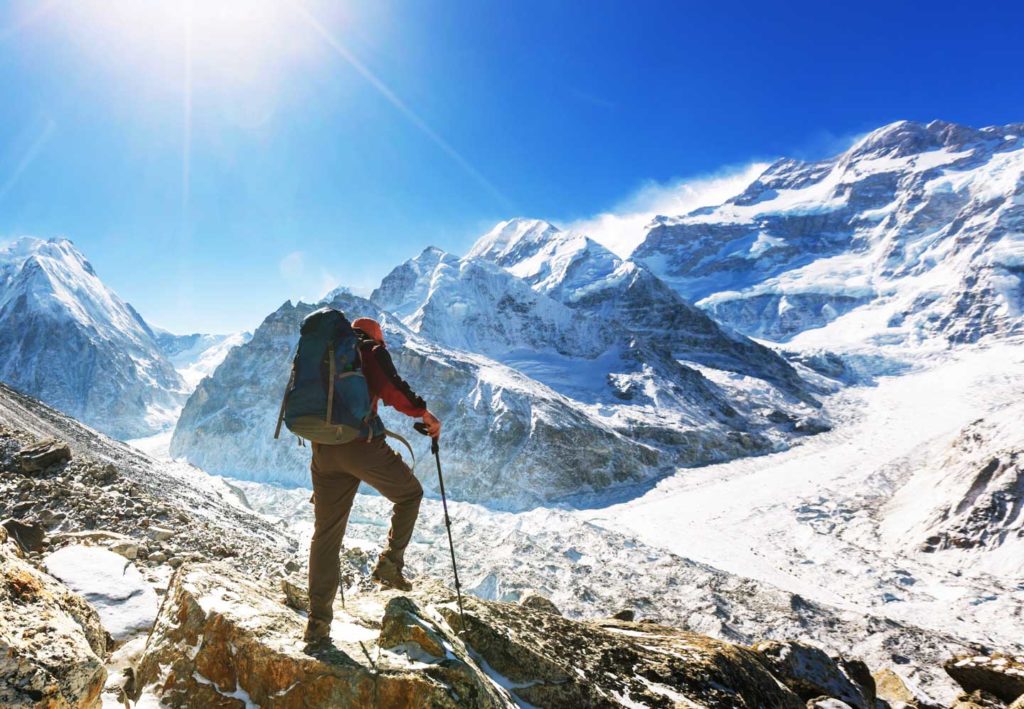
Embark on a remarkable adventure as you start your journey to Goecha La around 3 a.m. today. The trek amidst the nights and freezing weather adds an element of daring excitement, an experience to be cherished forever. The 3.5-hour trek to Goecha La (4980-5000 m) parallels the spirit of trekking in Everest Base Camp, starting in the dark from Lobuche to the base camp and back.
Standing at Goecha La, you’ll be greeted by the breathtaking panorama of Mt. Kanchenjunga, the world’s third-highest peak, seemingly within a stone’s throw. In contrast to Everest Base Camp, where seeing Everest is challenging, here you’ll witness nearly the entire grandeur of Kanchenjunga standing right before you. The imposing presence of Mt. Pandim (6691 m) adds to the spectacle. As you descend to the camp, the mesmerizing views of Kabru and other peaks will leave you speechless.
After returning to the campsite, indulge in a satisfying lunch before moving towards Thansing (3865 m), a 1.5-hour journey. Spend the afternoon stretching your legs, reviewing photos, and relishing warm meals. Falling asleep to the soothing sound of the river completes this memorable day.
Tshokha (2957 m): Back to Civilization
Today’s trek involves an easy downhill walk, descending 1200 meters in one day, leading you back to Tshokha. As you return, glancing back at the mighty Kanchenjunga, you’ll be amazed by the achievement of reaching the Goecha La summit. Retracing the same trail up to Kokchurong, you’ll then take another trail through a dense Rhododendron forest to reach Tshokha. The trail’s beauty, especially during spring, is truly enchanting. Celebrate this evening with your teammates and crew, marking the successful completion of your journey. Overnight stay in a tent.
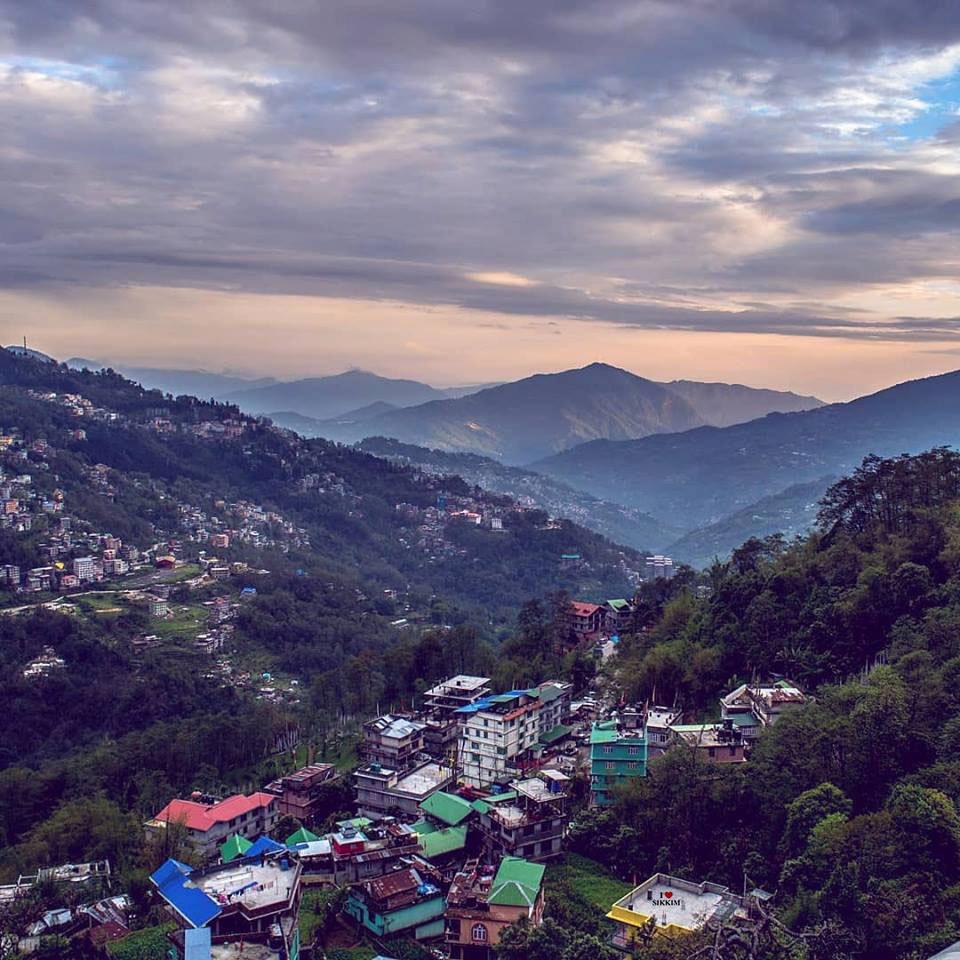
Today marks the culmination of your nearly two-week-long Himalayan adventure, and I’m certain the anticipation of a hot shower and a comfortable bed in a hotel room is delightful. We set out in the morning for Yuksom, a five-hour trek that concludes many trekkers’ journeys. However, I propose a two-hour drive to Pelling for the night, allowing you to indulge in the best hotel for a well-deserved rest. It’s a day to playfully tease other trekkers climbing uphill while you joyfully descend.
Upon reaching Yuksom, your transport, complete with refreshments, awaits you. The journey to Pelling promises a good night’s sleep, where you’ll retrieve your stored bags and extra clothes left before the trek.
Travel to the Capital
After a leisurely morning, embark on your journey to Gangtok via Ravangla, a beautiful Himalayan town offering stunning views. Pause for lunch and visit the impressive Buddha Park, home to one of India’s largest Buddha stupas. Continue the drive to Gangtok for an overnight stay at a hotel. Consider an evening group dinner and explore the town for some delightful bits and pieces.
Last Day in the Himalayas
Dedicate your day to exploring Gangtok and its surroundings. Visit nearby monasteries, attend the flower show, or head to the state zoo to catch glimpses of the Red panda and snow leopard. Don’t miss Enchay Monastery and Ganesh Tok for panoramic views of the Gangtok valley. Spend the evening discovering the town and immersing yourself in Sikkim’s nightlife.
Fly to Delhi
With Sikkim boasting a new airport just a two-hour drive from Gangtok, catch an early flight to Delhi that takes approximately two hours. Check into a hotel in Delhi, and in the afternoon, explore the vibrant streets, picking up gifts for family and friends. It’s your last night in India, so savor the experience.
Fly Home
As your Himalayan journey concludes, we all must return safely to our families, laden with unforgettable experiences and incredible stories of hiking in the Himalayas.

Thank you for reading, hope you can join one of my treks as well someday.- Mohan
Hidden Path- Kanchenjunga
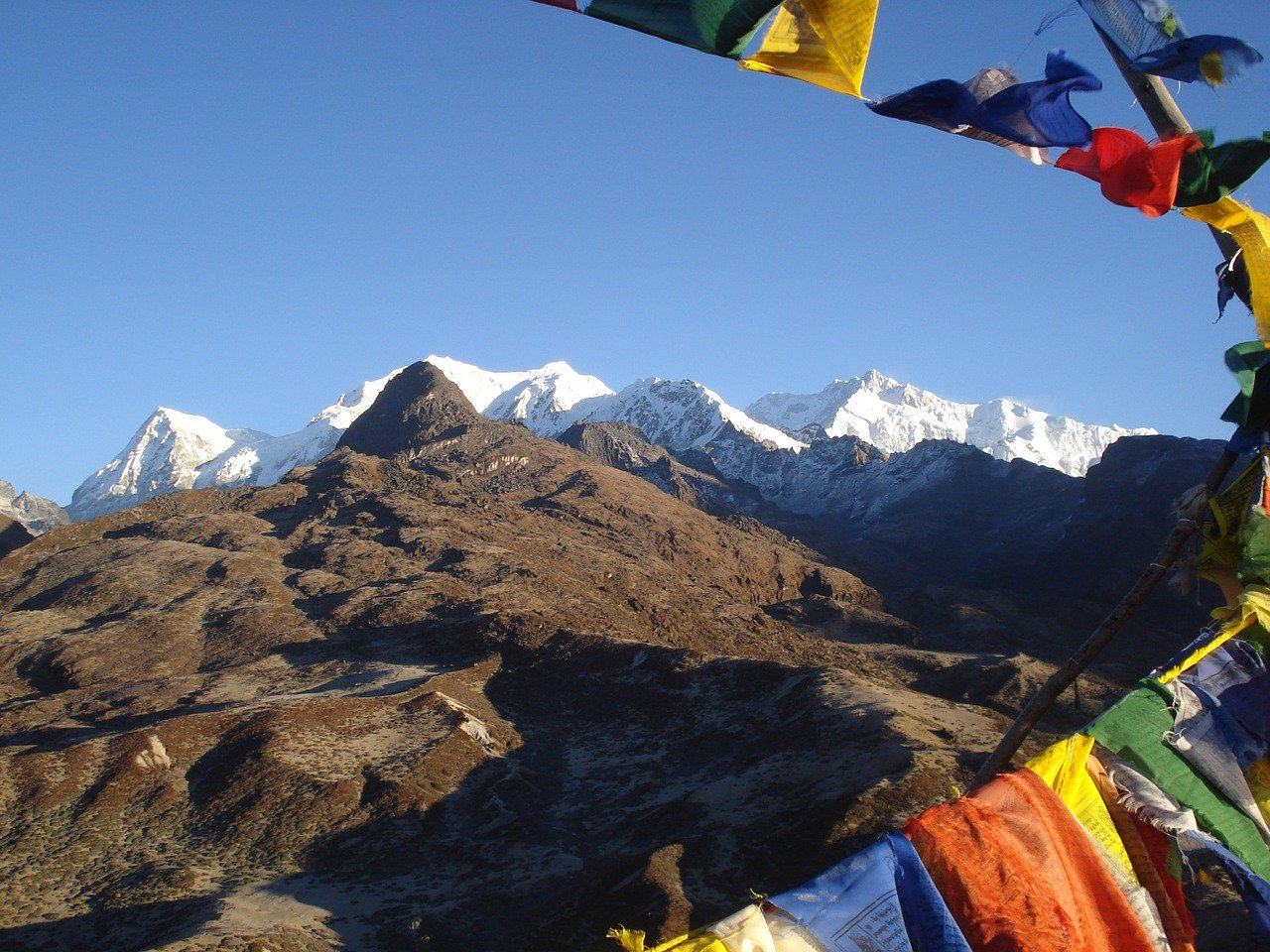
Kanchanjunga Trek.




